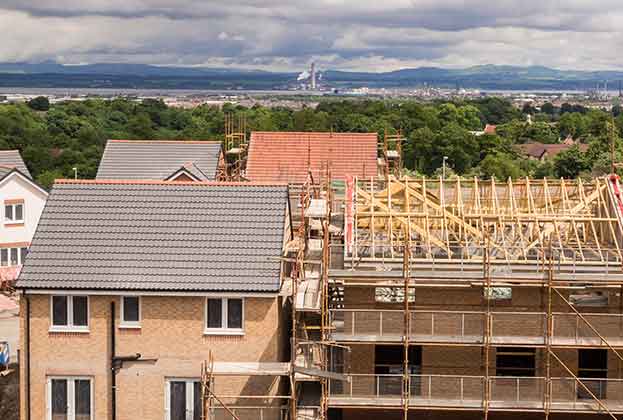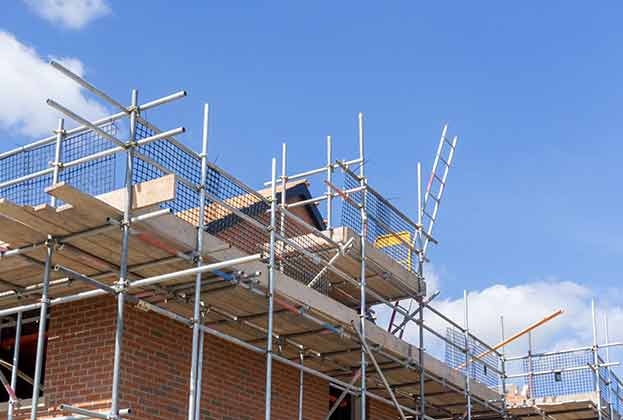The NPPF has aligned planning with market signals nationally, but a greater focus on local demand could increase the rate at which new homes are built and unlock opportunities for SME builders
A key goal of the NPPF has been to ensure that the planning system aligns with market signals and delivers sufficient land of the right type in the right places to support growth. Significant progress was made with the introduction of the standard method for calculating housing need in 2018, but there is more that could be done. Increasing market capacity through planning requires a greater focus on the mix of sites and types of units needed within a local market, as well as consideration of the opportunities available for SME developers.
Redressing the balance across the country
To increase delivery, the planning system needs to align delivering consents in areas of highest demand, to make full use of untapped market capacity. Our 2017 research found that the least affordable areas in the country accounted for almost 40% of housing need, but only delivered 20% of residential consents each year. That situation has shifted since the introduction of the standard method for calculating housing need, with the affordability multiplier applying an uplift to targets in areas with the highest housing demand. The local authorities in the two least affordable quintiles in England now deliver around 45% of planning consents, although there are still areas with significant shortfalls, particularly in London and the metropolitan green belt.
But while this has addressed the distribution of housing need at a national level, there are challenges to ensuring that the types of schemes gaining consent at a local level fully align with market demand and thereby maximise potential market absorption. This was one of the issues identified in the 2018 Letwin Review of Build Out Rates as a limiting factor to increasing delivery. Even when LPAs have identified particular requirements in their local plan, this is not translating through to the types of sites gaining planning consent.
In some local authorities, particularly among the 20 urban areas facing the 35% needing uplift, this should lead to considering Green Belt release to maximise the use of land in sustainable locations
Emily Williams, Director, Residential Research
Leeds provides a strong example of this challenge, particularly as the development pipeline in the city has become very concentrated in brownfield sites within the existing settlement. The current Leeds Core Strategy sets out a target that only 25% of new homes should be flats, and that two- and three-bedroom homes should dominate the mix instead. There is also a target that almost 70% of delivery be in the outer suburbs or beyond, rather than in the city centre. However, 62% of the future development pipeline is located on brownfield land in the city centre, where higher densities are required for sites to be viable. As a consequence, 67% of the development pipeline is smaller flats, rather than the family housing identified in the local plan. A similar challenge has been seen in Birmingham; the local plan identified that 54% of housing need was for three- and four-bedroom homes, but 62% of new build sales between 2016–2020 were properties of under 700 sq ft.
Clearly, the type of sites gaining planning consent are not always aligning with the aims of the local plan, and the absorption rate of new housing will be constrained as it is only serving the requirements of a small part of the market. In order to fully meet housing need, the planning system needs to be designed, so it both sets an appropriate overall housing target, and compels LPAs to engage with developers and land promoters to consider how suitable the sites they bring forward are to deliver a range of housing requirements. In some local authorities, particularly among the 20 urban areas facing the 35% needing uplift, this should lead to considering Green Belt release to maximise the use of land in sustainable locations.
Aligning with economic growth and the connectivity challenge
Our research has previously assessed the location of sites coming through the planning system, showing that the planning system was failing to link the delivery of new homes with future economic growth. In 2022, only 29% of the areas with the greatest levels of residential development planned were also recording the highest volumes of employment. As a consequence, the potential for continued growth in existing employment hubs will be limited by the lack of available housing to attract new workers to the area.
Equally, the developments coming forward further away from employment centres are likely to encourage less sustainable commuting patterns, and hinder attempts to reach net zero carbon targets, unless they are supported by new public transport infrastructure, which frequently will require planning across local authority boundaries.
The distance between sites allocated for housing and the nearest train station has been growing. Across all pre-2012 allocations that we have data for, 38% of homes were on sites within a mile of a train station (with two-fifths of those within just half a mile). Across allocations adopted after 2012, this has fallen to 28%. Likewise, the number of homes within one and ten miles of a train station has risen from 60% to 71% over the same period. This underlines the importance of aligning housing delivery with new public transport infrastructure as settlements expand. In cities surrounded by green belt designations, this may require green belt release to ensure the potential surrounding existing transport hubs is maximised.
SME developers and total development capacity
The failure to increase the volume of small sites at the same rate as larger schemes, as outlined in the previous article, also has major consequences for the ability to grow development capacity and the size of the housing pipeline. The chart below shows the rapid and sustained fall in the number of active builders since the global financial crisis, and the lack of any recovery in registrations by smaller housebuilders, despite an uptick in overall home delivery. The HBF estimated that SMEs comprised an annual average of 39% of new build delivery before 1990, falling to just 12% in 2017.
It is likely that this trend has been driven at least in part by the lack of smaller sites and outlets provided by the planning system, alongside a more challenging lending environment for smaller developers. Respondents to the FMB’s survey of SME housebuilders cite the lack of available and viable land as the greatest constraint on their ability to build more homes, with the planning system being the second most cited constraint. Actively planning for a greater range of site sizes, and delivering more small sites alongside the larger sites more suited to master developers and major housebuilders, would create opportunities for SME builders and new entrants and expand the total development capacity in England.
Implications
The government should consider national policy initiatives to restore the link between planned economic growth and other growth, such as housing. An overriding imperative is sustainable development, which will mean difficult decisions are required by LPAs in respect of appropriate urban densification and potential Green Belt release. To be effective, policy will often need a larger-than-local approach. Where appropriate, either through the NDMP or local plans, specific policies to support and encourage SMEs should be considered.
Want to find out more about Planning and Development? Read our latest insights here.
Read the articles within Planning Research 2023 below.
.jpg)

